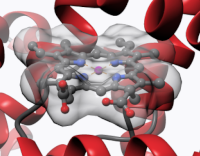Reading List
A list by Biophysics Colab
Articles that are being read by Biophysics Colab.

Showing page 5 of 67 pages of list content
-
-
Structural basis of insulin receptor antagonism by bivalent site 1-site 2 ligands
This article has 6 authors: -
Engineering Antibody-Drug Conjugates targeting an Adhesion GPCR, CD97
This article has 15 authors: -
-
Stereoselectivity and functional plasticity of a common ligand-binding pocket in TRPM3
This article has 9 authors: -
Evolution of temperature dependence of TRPM2 channel gating and inactivation in vertebrates
This article has 3 authors: -
The Energy Barrier Model in Membrane Biophysics: Ion Flow, Current-Voltage Relations, and Donnan Osmosis
This article has 1 author: -
-
Thermodynamic basis for CFTR activity potentiation
This article has 1 author: -
Go/z-biased coupling profile of the dopamine D3 receptor
This article has 6 authors: -
SLC26A11 is an atypical solute carrier with dual transport-channel function mediating lysosomal sulfate transport
This article has 10 authors: -
Single-molecule localization microscopy reveals the molecular organization of endogenous membrane receptors
This article has 11 authors: -
Molecular characterization of an adhesion GPCR signal transduction
This article has 11 authors: -
Beyond Gatekeeping: Efflux Pumps Remotely Destabilize Cytoplasmic Drug–Target Interactions by Limiting Rebinding
This article has 4 authors: -
Surface-attached model lipid membranes derived from human red blood cells
This article has 3 authors: -
-
Active regulation of the epidermal growth factor receptor by the membrane bilayer
This article has 6 authors:This article has been curated by 1 group:Reviewed by eLife
-
Molecular insights into ligand recognition and signaling of GPR99/OXGR1
This article has 4 authors: -
Deep learning-based joint sequence–structure de novo membrane protein design
This article has 11 authors: -
Mechanism of Tethered Agonist Binding to an Adhesion G-Protein-Coupled Receptor
This article has 2 authors: